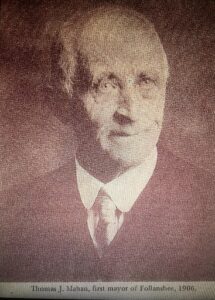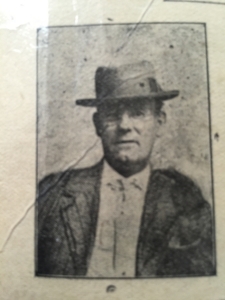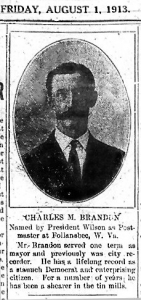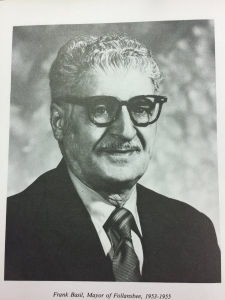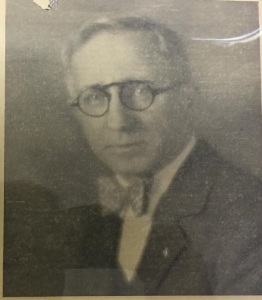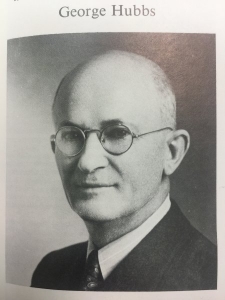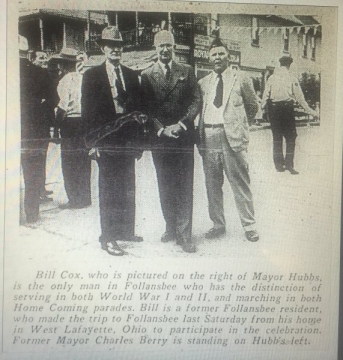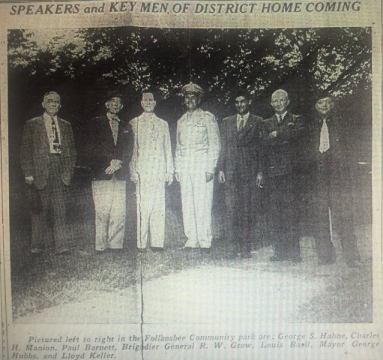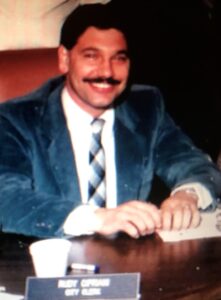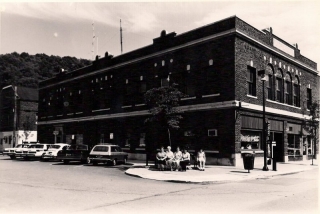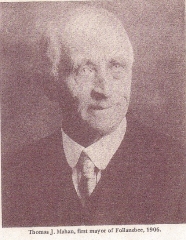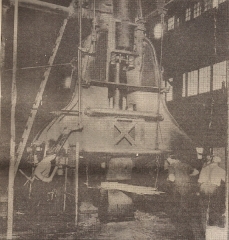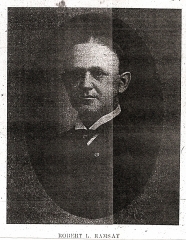
Robert Ramsey became the first attorney and solicitor of Follansbee serving from 1906 until 1920. He was the chief legal advisor for all city legislative matters. His early political views were affiliated with the Citizens Party, a non-partisan organization that nominated candidates for office, regardless of their political affiliation, so long as they were viewed as the best possible for the city. During the 1913 Citizens Party meeting, Ramsey, acting as chair, pointed out that during Follansbee’s past seven city elections, the Citizen’s ticket was successful six times, the Republicans once.
Robert Ramsey also acted as the attorney for the stockholders of the Bank of Follansbee created in 1914. In April 1914, he successfully defended Follansbee’s position as the judicial center for the Cross Creek District against opposing Colliers citizens who petitioned to divide the magisterial district.
In 1915, Ramsey drafted the rules governing city traffic including the speed and control of horses and vehicles. Also in 1915, he composed the new city charter identifying the official representatives of city government to be elected for a term of two years.
Ramsey was a brilliant orator frequently called upon to speak at public occasions. During a 1913 Fraternal Order of Eagles memorial, Ramsey spoke in honor of the departed member, W. B. Jones. “Our order represents the best in civilization. Progress goes on in carrying out God’s final purpose. Each generation takes its step beyond the one that has gone on before… We shall meet our departed brothers face to face in the hereafter.” As Follansbee boys were going off to war in 1917, Ramsey spoke at a patriotic rally in Wellsburg, “… there is no question where the people of old Brooke county stand; we are ready to again renew our allegiance to the old flag, ready…with our lives to defend the honor, the dignity and the life of our beloved Republic.”
Robert Ramsey served two terms as prosecuting attorney of Brooke County, 1908-1912 and 1916-1920. He was the State prosecutor in the sensational 1920 Madam Stanley murder trial that attracted national attention as hundreds filled the county court room in Wellsburg. Madam Stanley, a clairvoyant living in Follansbee, was an accomplice in the murder of a man whose body was thrown off the Market Street Bridge. Robert Ramsey’s successful prosecution of the Madam Stanley trial brought him greater visibility as an attorney and political figure in the Democratic Party.
He was appointed to the board of governors for West Virginia University from 1927 to 1930. He was elected from West Virginia as a Democrat to the US Congress serving from 1933-1939, 1941-1943, and again from 1949 to 1953.
Robert L. Ramsay, the son of a coal miner, was born 1877 in England, and immigrated to the USA with his parents in 1881. His parents first settled in New Cumberland (WV), where Robert attended the public schools and later West Virginia University law School graduating in 1901. As the Follansbee Brothers Mill began construction in 1902, Robert moved to the boom-town where he established his law practice. He died in 1956 and is interred in Oak Grove Cemetery, Follansbee.
For additional information about Robert Ramsey, see the items listed on the Follansbee Timeline:
- Timeline, May 9, 1913 – Fraternal Order of the Eagles Memorial
- Timeline, April 6, 1917 – Congress Declares War
- Timeline, Oct. 1920 – Madame Stanley’s Sensational Murder Trial
See also, “Robert L. Ramsay (politician) http://en.wikipedia.org/wiki/Robert_L._Ramsay_(politician)
